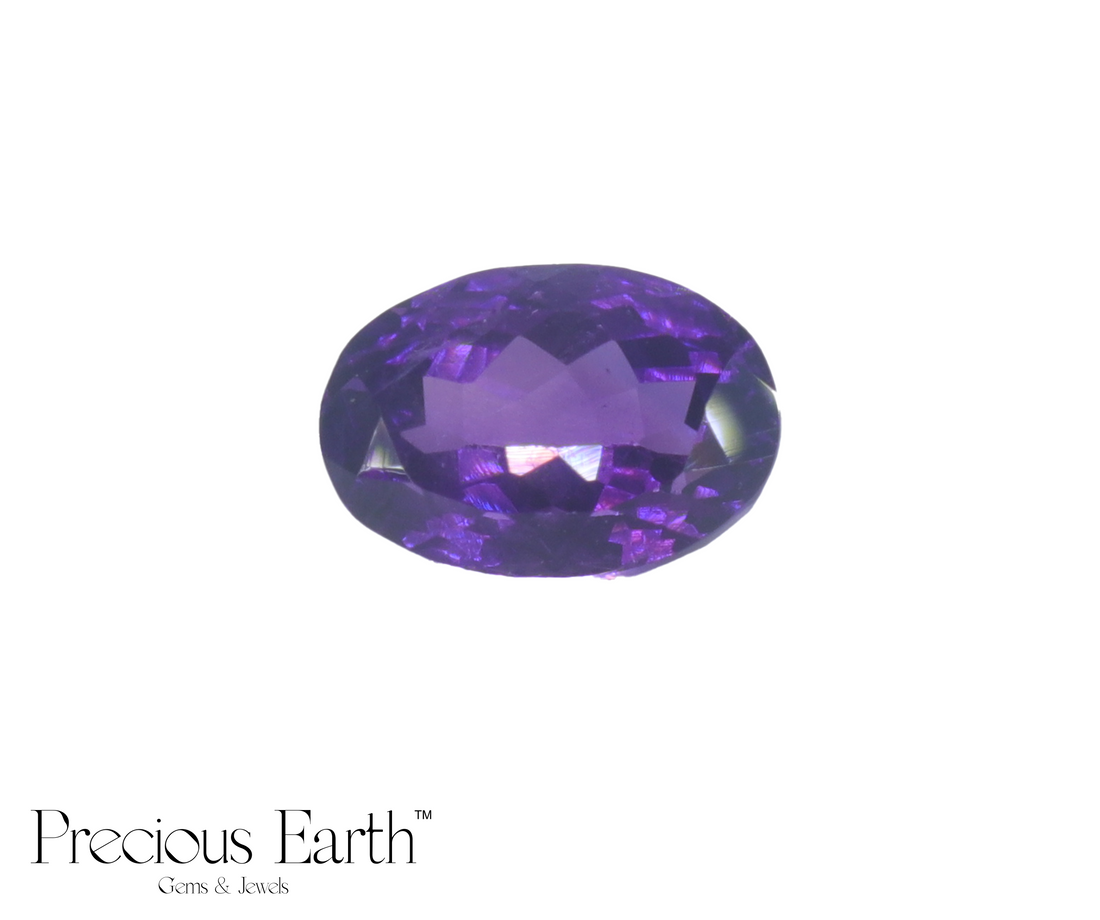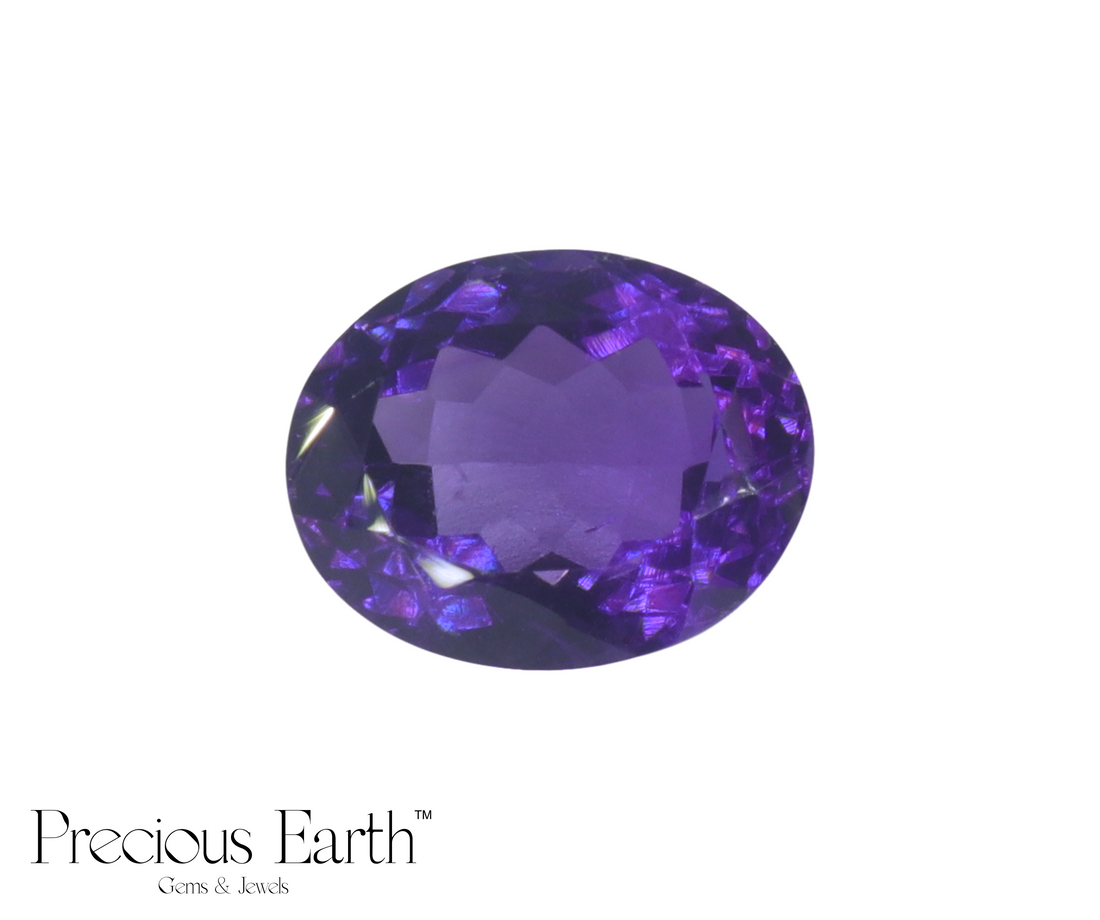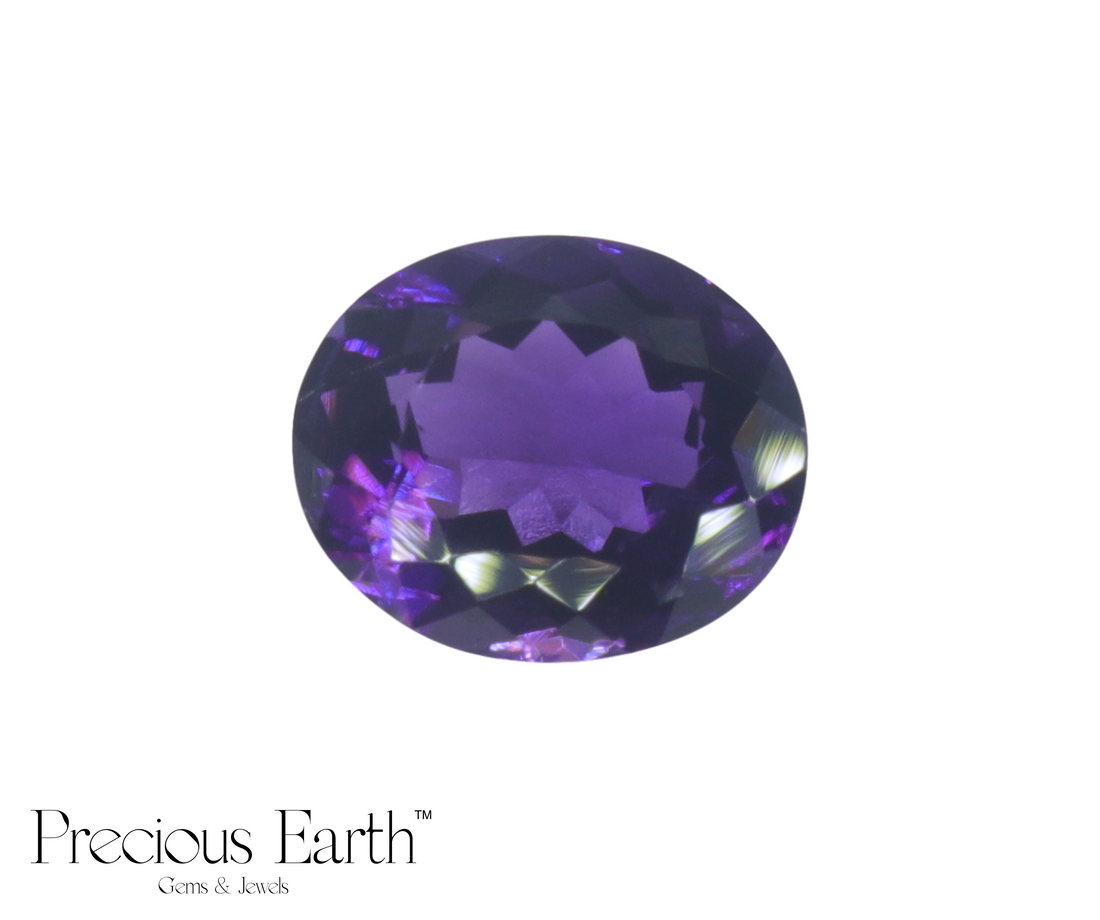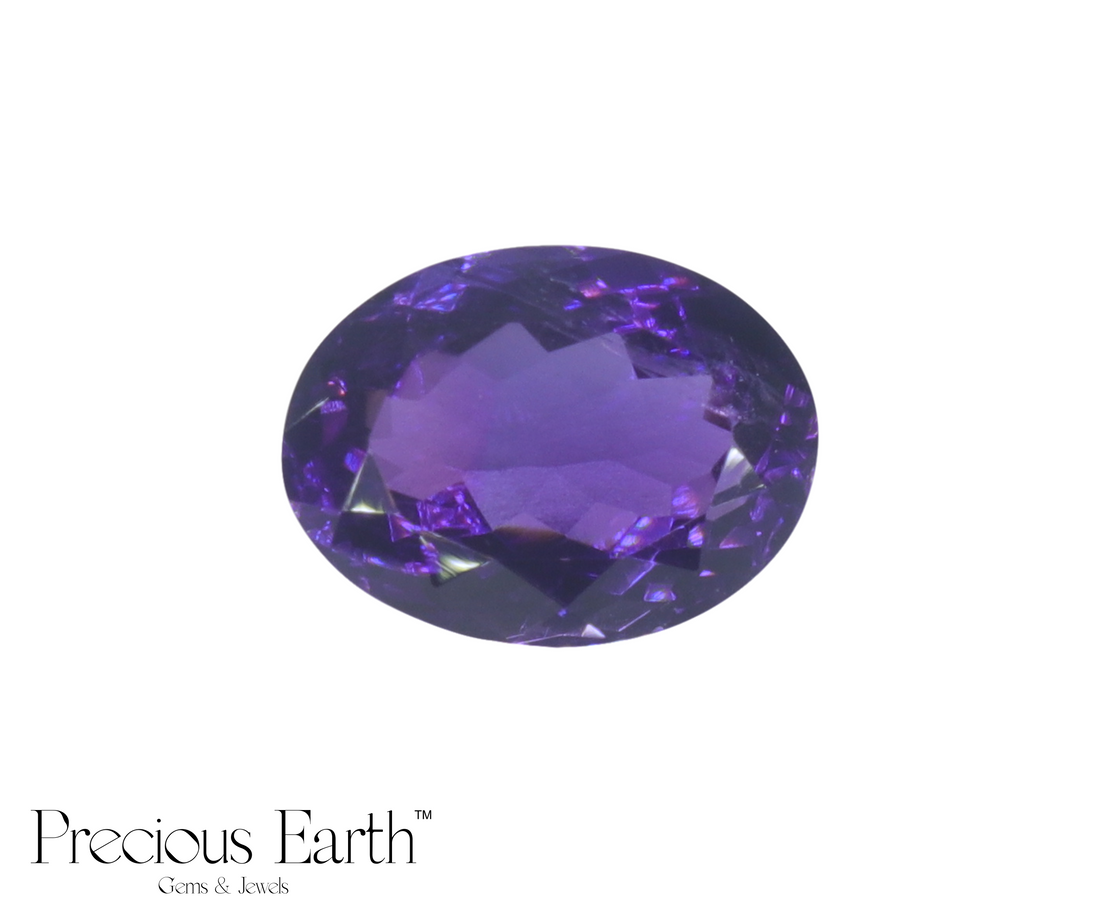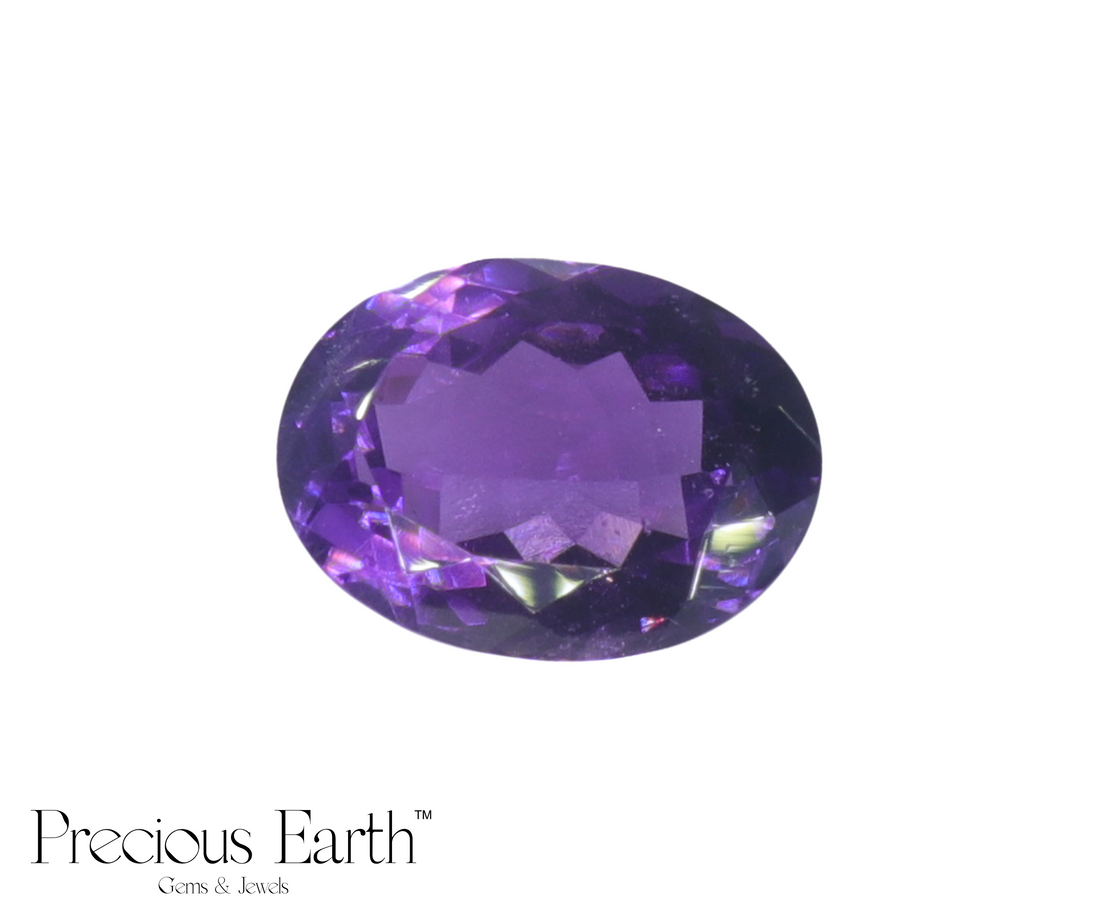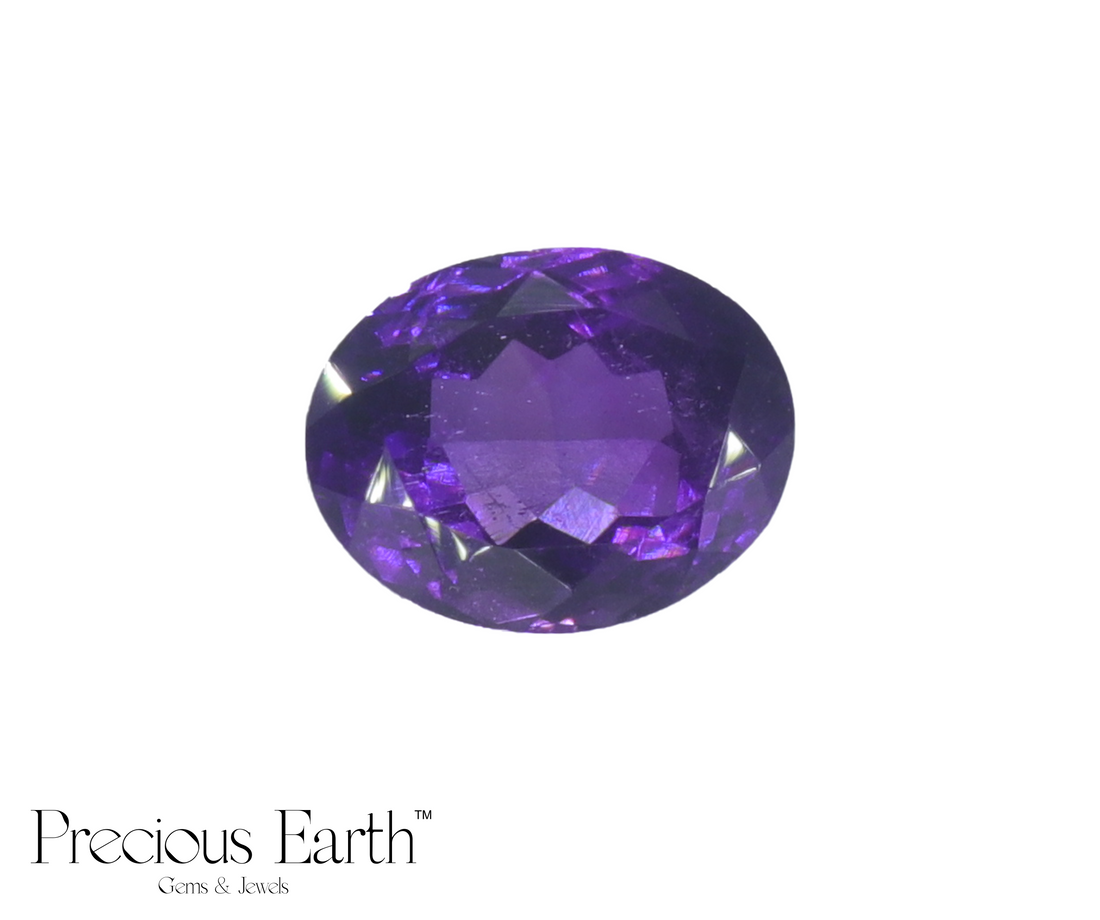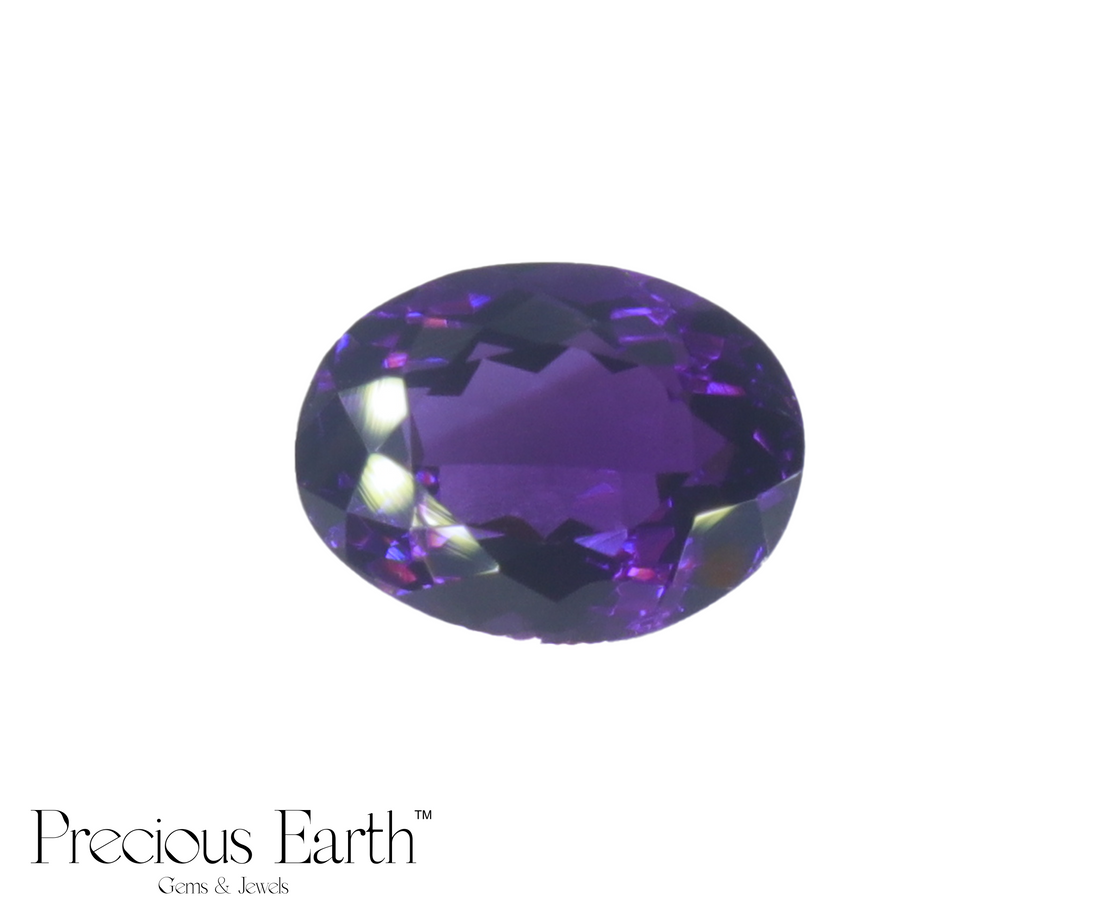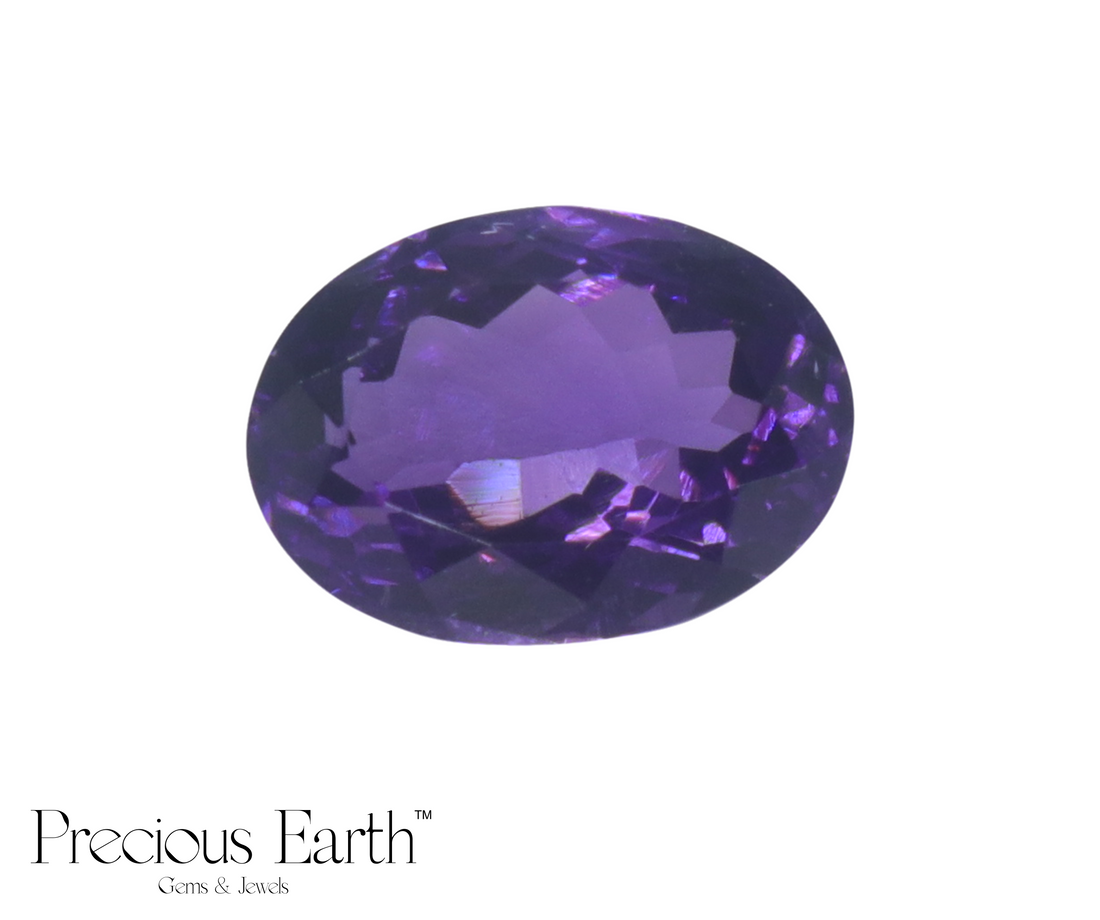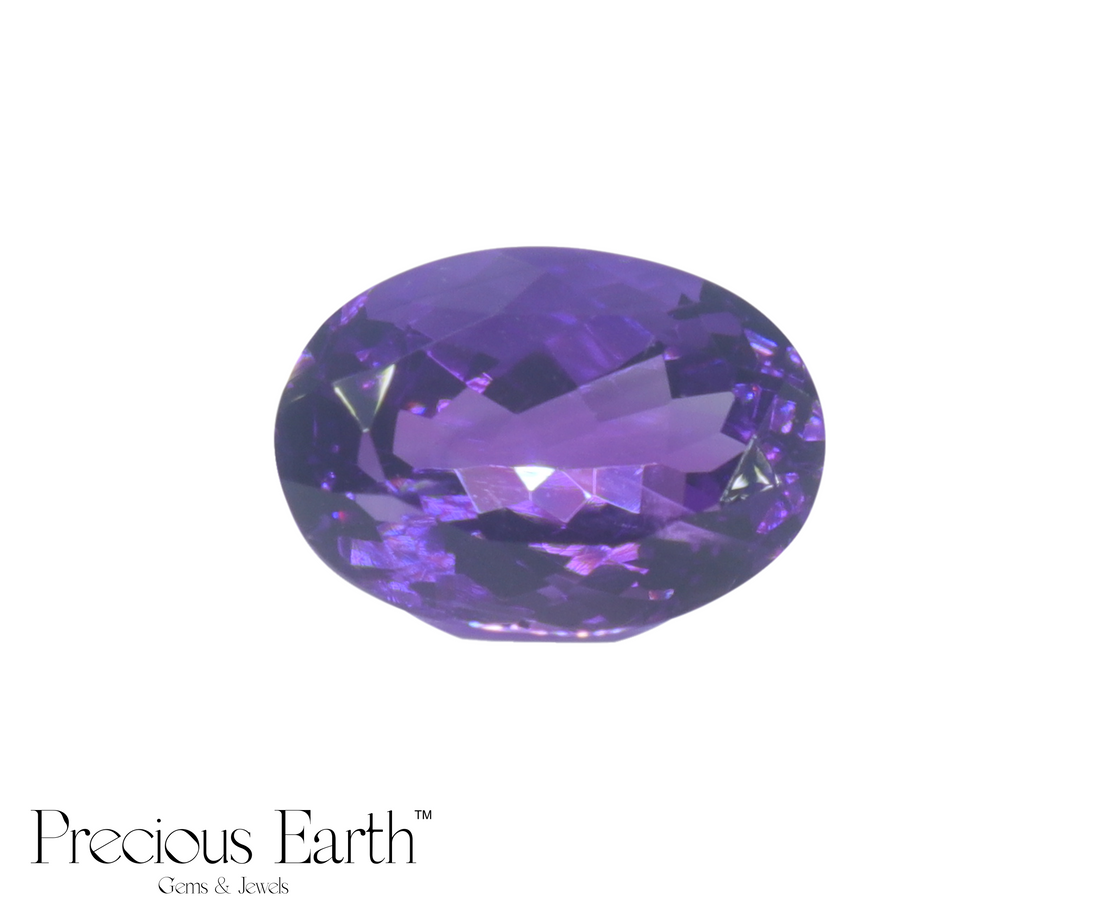This article serves as part of an ongoing series of profiles on the different varieties of precious & semi-precious gemstones. To view the entire list, click here.
Amethysts, with their captivating purple hues, belong to the quartz family and hold a significant place in the world of gemstones. They are renowned for their soothing energy, making them highly sought after for their metaphysical properties. Symbolizing spiritual growth, clarity, and inner peace, amethysts have long been associated with serenity and tranquillity.
The term "amethyst" has its roots in ancient Greek mythology. Derived from the Greek word "amethystos," meaning "not intoxicated," amethysts were believed to possess the power to protect against drunkenness and ensure a sober mind. One intriguing historical fact about amethysts is their association with royalty and nobility throughout the ages. From ancient Egypt to the Renaissance period, amethysts adorned the crowns, sceptres, and jewelry of kings and queens, symbolizing power, wealth, and prestige. Catherine the Great of Russia was particularly fond of amethysts and created intricate and opulent jewelry pieces featuring these exquisite gemstones.
Join us on this captivating exploration of amethysts as we unveil their hidden wonders, delve into their mystical meanings, and unlock the secrets of their formation, in this gemstone profile.
1. Amethysts - Formation & Occurrence
Amethysts belong to the quartz family and are formed through a combination of geological processes. They originate from silicon dioxide-rich solutions that infiltrate cavities and fissures within rocks, often found in volcanic regions. Over time, as these solutions cool and crystallize, the silicon dioxide molecules arrange themselves into an orderly lattice, giving rise to amethyst crystals. The distinct purple colouration is attributed to trace amounts of iron and other impurities within the crystal lattice. The intensity of the purple hue can vary, ranging from delicate lilacs to deep royal purples.
The characteristic purple colour of amethysts arises from the presence of trace elements, particularly iron, within the crystal lattice. The intensity and hue of the purple colour can vary based on the concentration and distribution of these impurities. Other factors such as light exposure and heat treatment can also influence the colouration of amethysts.
 A rough Amethyst crystal
A rough Amethyst crystal
2. Where Are Amethysts Found?
Amethysts are found in various regions across the globe, each offering unique characteristics and geological contexts. Brazil is renowned for producing high-quality amethysts, particularly in the state of Rio Grande do Sul. The amethyst mines in Uruguay also yield exceptional specimens. Zambia, in Southern Africa, is another significant source of amethysts, known for their vibrant purple colouration. Notable regions also include Russia, Uruguay, Bolivia, Canada, and the United States.
In Brazil, amethysts are commonly found in geodes, which are hollow rocks lined with crystals. Uruguay's amethysts often occur in volcanic rocks and drusy formations, displaying beautiful clusters of tiny crystals. Zambian amethysts can be found in both vein and geode formations, showcasing intense colour saturation. Russian amethysts are recognized for their deep purple colour and exceptional clarity.
In general, Brazilian amethysts are renowned as the finest variety, while amethysts from other regions generally also exhibit standard quality with minimal inclusions.
 An Amethyst mine in Brazil (Source: GIA)
An Amethyst mine in Brazil (Source: GIA)
3. The Colour Span of Amethysts
Amethysts are renowned for their exquisite purple colours, ranging from delicate lavender and lilac shades to deep, velvety royal purples. The primary factor responsible for the purple hue is the presence of trace amounts of iron within the crystal lattice. The intensity and saturation of the purple colouration can vary, creating a captivating spectrum within the amethyst family. Other factors that may affect the colour of an amethyst are their geological formation context, and whether or not the gemstone has undergone any thermal enhancements.
Beyond the classic purple, amethysts offer fascinating variations that collectors and gemstone enthusiasts appreciate. These variations occur due to various factors, including geographic origin, impurities, and external influences. The range of colours that an amethyst may occur in can broadly be classified as follows:
- Deep Purple: Amethysts from regions such as Brazil, Uruguay, Zambia, and Siberia often exhibit rich, deep purple hues. Amethysts from these regions are highly sought after for their intense colour saturation.
- Light to Medium Purple: Some amethysts display lighter shades of purple, such as pastel lavenders and lilacs. These delicate hues are prized for their soft, ethereal appeal and are often found in Brazilian amethysts.
- Bicolour & Tricolour Amethysts: These unique gemstones feature distinct bands or zones of different colours. Bicolour amethysts combine purple with hues like yellow, brown, or white, while tricolour amethysts showcase three distinct colours in a single crystal. Such bicolour or tricolour amethysts are extremely rare.
 The different shades of an Amethyst (Source: With Clarity)
The different shades of an Amethyst (Source: With Clarity)
4. Common Inclusions in Amethysts
A significant portion of the faceted amethysts available in the market possesses an "eye-clean" quality, indicating the absence of visible inclusions when viewed with the naked eye. Notably, African amethysts, particularly those sourced from Zambia, showcase a mesmerizing and deeply saturated raspberry colour. It is worth noting that this African material tends to have a slightly higher incidence of inclusions compared to amethysts from Brazil. Nevertheless, the captivating and remarkable colour of Zambian amethyst makes it highly desirable and acceptable for use in faceted gemstones. Conversely, when an eye-clean amethyst of the same vivid colour is found, it holds even greater value due to its rarity and exceptional clarity.
 Fluid inclusions within an Amethyst (Source: GIA)
Fluid inclusions within an Amethyst (Source: GIA)
In general, amethysts may have the following types of inclusions present within the body of each specimen:
- Rutile Needles: Rutile is a mineral that forms needle-like structures within amethyst crystals. These delicate golden or reddish-brown needles create stunning patterns, often referred to as "silk," giving the gemstone a unique and distinctive appearance.
- Hematite or Goethite Inclusions : Hematite or goethite are iron oxide minerals that can create reddish-brown or brown inclusions within amethysts. These inclusions often form interesting patterns, such as patches or veining, and add an earthy touch to the gem's appearance.
- Gas or Liquid Inclusions : Amethysts may also contain small gas or liquid-filled cavities, known as "enhydros" or "inclusions of fluid." These inclusions can range in size and may appear as bubbles, lines, or wisps within the crystal. They provide a glimpse into the gem's formation process and contribute to its unique allure.
- Crystal Inclusions: Occasionally, other minerals or crystals can become trapped within amethysts during their formation. These inclusions can include tiny crystals of quartz, calcite, or other minerals. Their presence adds complexity and visual interest to the gemstone, creating a captivating interplay of colours and shapes.
 Hematite needle inclusions in an Amethyst (Source: GIA)
Hematite needle inclusions in an Amethyst (Source: GIA)
While inclusions are often considered flaws in gemstones, they can also enhance the beauty and uniqueness of amethysts. Inclusions serve as a fingerprint of the gem's natural formation and provide insight into its geological history.
5. Common Treatments & Enhancements of Amethysts
Most amethysts available in the market today are untreated. This is largely due to the natural characteristics of the mineral itself – specifically its eye-clean clarity, and intense colour saturation. Given the fact that amethysts are “type 2” gemstones (having few inclusions), they are usually eye-clean, and don’t actually require any further enhancements or heating to make them appear clearer. Their purple shades are also usually intensely saturated when mined from the Earth, so in general, these minerals do not require any human processes to make them more appealing.
In very rare occasions, however, amethysts with a higher count of inclusions may be thermally enhanced. This is usually done with lower-quality specimens or specimens that have not been cut accurately to minimise inclusions.
| Mineral | Quartz |
|---|---|
| Colour Span | Light lavender & pale violet, to a deep purple |
| Popular Origins | Brazil, Sri Lanka (Ceylon), USA, Siberia, Zambia, etc. |
| Mohs Hardness | 7 (on a scale of 10) |
| Common Treatments | Usually untreated; may be thermally enhanced or irradiated on occasion |
| Birthstone | February |
Amethysts (Jamunia) - A Quick Snapshot
6. Evaluating the Quality of an Amethyst
When it comes to purchasing amethyst, understanding the key factors that determine its quality is essential. In this regard, one cannot go wrong with the 4Cs:
- Colour: The colour of an amethyst is perhaps the most vital factor in determining its quality. Look for amethysts with a deep, vibrant purple hue that is evenly distributed throughout the gemstone. The most prized amethysts showcase a rich saturation, free from any undertones or colour zoning. Additionally, highly valued amethysts may display slight variations in shade due to the presence of natural colour zoning, which can add visual interest. Remember, the more intense and purer the purple colour, the higher the quality and value of the amethyst.
- Clarity: Examining the clarity of an amethyst is crucial to assess its quality. Ideally, seek gemstones with high transparency, devoid of visible inclusions or blemishes when observed with the naked eye. The presence of large, eye-visible inclusions can hinder the gemstone's brilliance and overall appeal. However, it is essential to note that amethysts with minor inclusions, such as tiny crystals or growth lines, are still considered desirable and can add character to the gemstone. Ultimately, choose amethysts with a pleasing balance between clarity and unique natural formations.
- Cut: The cut of an amethyst significantly impacts its beauty and ability to reflect light. Look for well-executed cuts that maximize the gem's brilliance and sparkle. Amethysts are commonly faceted to enhance their light performance, with popular shapes including round, oval, and emerald cuts. Ensure that the facets are symmetrical and properly aligned, allowing for optimal light refraction. Additionally, a well-proportioned cut should highlight the gem's colour and minimize any colour zoning. A precision cut will unlock the inner radiance of the amethyst, adding to its overall quality and allure.
- Carat Weight: Carat weight is a crucial consideration when evaluating the quality of an amethyst. While personal preference plays a significant role, larger amethysts with excellent colour, clarity, and cut are typically more valuable. In general, amethysts weighing between 8-12 carats are considered standard, and higher carat weights may command a size premium.
To determine the overall quality of a yellow sapphire, it is important to work with a reputable jeweller or gemmologist who can assess the gemstone's characteristics and provide an expert opinion.
7. How Much Do Amethysts Cost?
As a variety of the Quartz group of minerals, amethysts are quite abundantly found in nature relative to other gemstones such as rubies, sapphires, or emeralds. As such, they’re considered to be semi-precious and are significantly more affordable. In general, a standard quality amethyst may start from $5 per carat, and higher qualities may fetch a price of about $30 per carat.
8. Amethysts in Astrology
Throughout history, amethysts have been revered for their healing properties. Ancient civilizations believed this gemstone had the power to ward off negative energies and helped with addictions. Amethysts were also thought to alleviate stress, anxiety, and insomnia, while instilling a sense of peace and tranquillity.
As such, amethysts, in general, have deeply been entwined with astrology in history, and are often associated with the zodiac signs of Aquarius, Pisces, Gemini, and Virgo. This gemstone also serves as the birthstone for February, making it an ideal choice for individuals born during this month. It is also believed that amethysts derive their cosmic energy from the planet Saturn, symbolizing wisdom, intuition, and spiritual growth.
 Amethysts (Jamunia) in Astrology
Amethysts (Jamunia) in Astrology
For astrology enthusiasts on a budget, amethysts make for an exquisite substitute for blue sapphires. With their regal purple hues resembling the beauty of sapphires, amethysts allow individuals to harness the energies associated with the powerful planet Saturn without breaking the bank.
In general, astrology posits that amethysts are known to provide the following benefits to their wearers:
- Spiritual Awakening & Intuition Enhancement: Amethysts are renowned for their ability to heighten spiritual awareness and intuition. When worn or placed in the living space, amethysts are believed to open the crown chakra, facilitating a stronger connection to higher realms and allowing individuals to tap into their innate psychic abilities. This gemstone assists in the development of intuitive insights, helping individuals make sound decisions and navigate life's challenges with clarity and wisdom.
- Emotional Balance & Stress Relief: Amethysts have a calming and soothing energy that aids in emotional balance and stress reduction. This gemstone can help alleviate anxiety, fear, and grief, promoting a sense of inner peace and tranquillity. By working with amethysts, individuals may experience improved emotional well-being, enhanced self-awareness, and a greater ability to let go of negative emotions, fostering a healthier state of mind.
- Protection Against Negative Energies: In astrology, amethysts are known for their protective qualities. They are believed to create a shield against negative energies, including psychic attacks and electromagnetic pollution. By wearing or placing amethysts in the home or office, individuals can create a sacred space that promotes positivity, harmony, and energetic balance. This gemstone acts as a spiritual bodyguard, safeguarding against negative influences and enhancing overall energetic well-being.
- Facilitation of Healing & Restoration: Amethysts are also associated with physical, emotional, and spiritual healing. These gemstones are thought to support the body's natural healing processes, relieve physical ailments, and promote restful sleep. They are also believed to aid in the recovery from addiction or unhealthy habits by purifying the mind, body, and spirit. By working with amethysts, individuals can experience a renewed sense of vitality and well-being.



